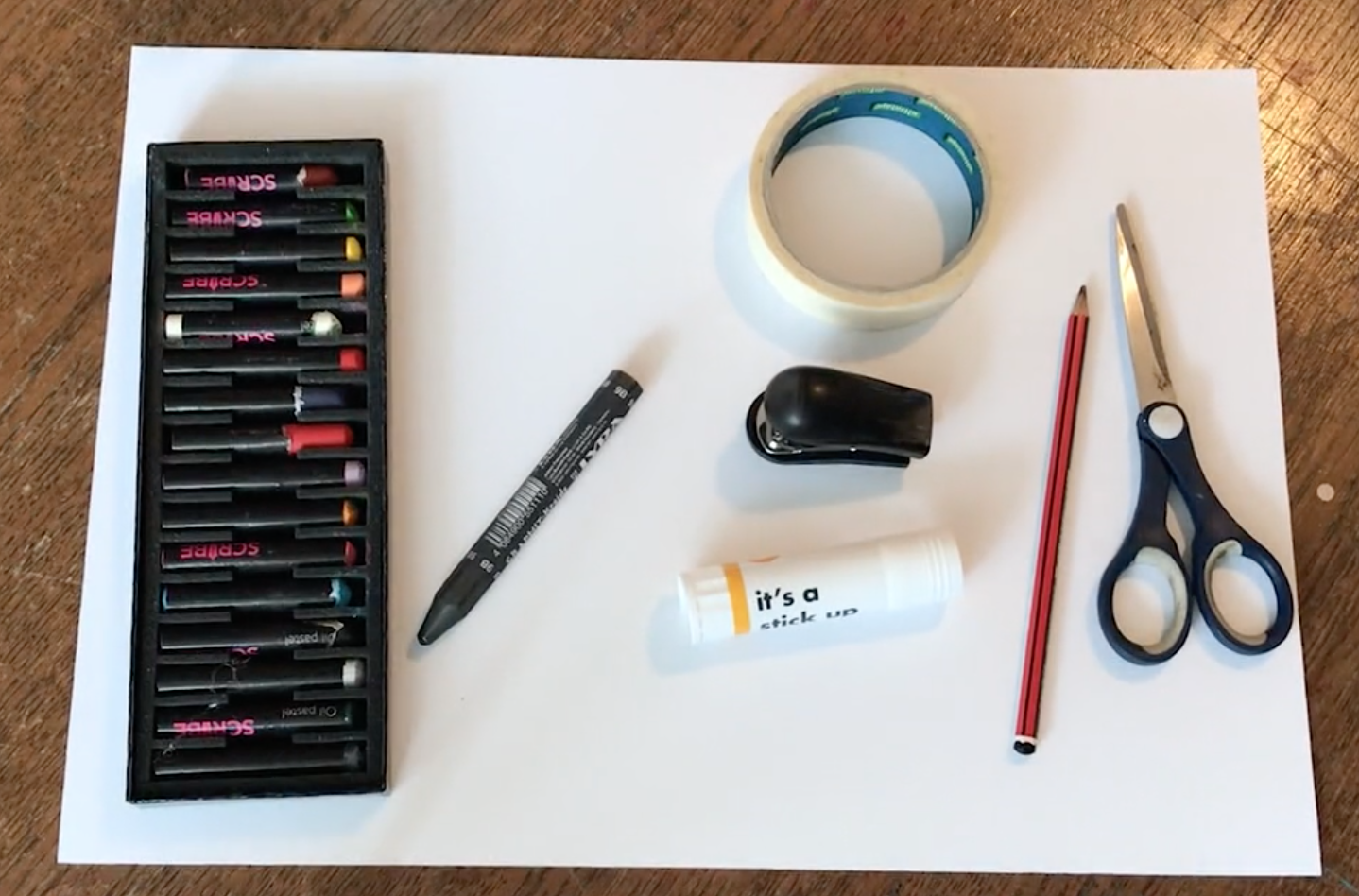By Bethany Hanley
Explore your isolation environment in a new and innovative way… through frottage! Gathering rubbings to discover interesting textures then create a collage inspired by a beloved object.
Don’t forget to submit photos of your final pieces and any process photos or post online and tag @natsatclub
Overview
Textile designers use a vast range of processes and techniques in order to develop drawings and fabrics, both 3D and 2D. Many designers use traditional print methods such as lino printing, screen printing and etching to create their final pieces and samples. This activity introduces you to ancient print method of frottage. Also known as rubbing, this discovery dates as far back as the 2nd Century AD.
There is already a large market for traditional printed surfaces. Textile and surface designers will use these traditional methods to create the following:
- Wallpapers
- Fashion fabrics (fashion designers then create clothing out of that fabric)
- Interior fabrics (interior designer will create curtains and other interior furnishing out of that fabric)
- 2D textile pieces for sale/exhibition
- 3D textile pieces for sale/exhibition
- Prints for sale/exhibition
- Printing onto different surfaces e.g. metal, plastic for jewellery
These are just a very few examples.
Materials needed
- Pencil
- Paper/sketchbook
- Scissors
- Optional: graphite, charcoal, oil or soft pastels

Activity part one – Foraging for everyday objects and gathering your ‘ancient’ rubbings
Please be mindful of the surfaces you are rubbing, we don’t want any upset guardians if wallpaper and household goods have been marked. Also be mindful of health and safety, don’t do rubbings of plug sockets or anything that could cause harm.
- Gather your materials
- Have a forage around your isolation space, looking for textured surfaces. Examples are shown in the video and there are some listed below
- Wooden floor texture
- Radiators
- Light switches
- Raised textured wallpaper
- Door handles
- Kitchen utensils (like a spatula)
- Hair brush
- Once you have found a textured surface, lay your paper/sketchbook over it. If using a sketchbook only use one page at a time
- Use your pencil or other preferred material to create a rubbing
- Think about how you might develop these rubbings into final pieces.. onto textile garments, as prints, wallpapers…
Remember to photograph your work continually.
Activity part two – Collage
This task is to be completed once you have a large selection of rubbings.
1. Find an object that you LOVE! You might choose it because it is interesting to look at, it has fond memories attached to it, you like the shape or the texture or for any other reason
2. Recreate that object using some of your rubbings by collage
-
To make the collage, you can either carefully cut your rubbings or tear them to create a textured edge, it’s up to you
- Before sticking the college down make sure you have played around with the placement of the college. You might decide that some pieces need moving. Stick your pieces down last
- You can use a glue stick, tape, staples or whatever you have to hold the college in place
3. Think about how this collage might develop further as a final piece
Remember to photograph your work continually, including all of the different placements within you collage.
Thank you for taking part in The Northern School of Art Hartlepool Saturday Club Workshop.
Submit photos of your final pieces and any process photos or post online and tag @natsatclub
Resources & References
Contributed by Bethany Hanley, The Northern School of Art, Hartlepool Art&Design Saturday Club, based at The Centre for Excellence in Creative Arts Hartlepool
Bettie has a background in Textile and Surface design and runs two businesses in the textile industry and events. Bettie has exhibited work in New York, Paris, Brussels and sold work to the likes of Victoria’s Secret.
“I have adored all of the time I have spent engaged with the Saturday Club so far. It has made such a huge impact on my life from being involved in the very first Club when I was 14, and now I teach the Club. It’s such a fantastic experience and has enriched my life so much, I really want to share that with my groups each year. It’s fabulous seeing them blossom creatively and take very different approaches to the projects. It’s an exciting thing to be a part of and I cannot wait for our emerging artists to be at the forefront of the creative industry.”